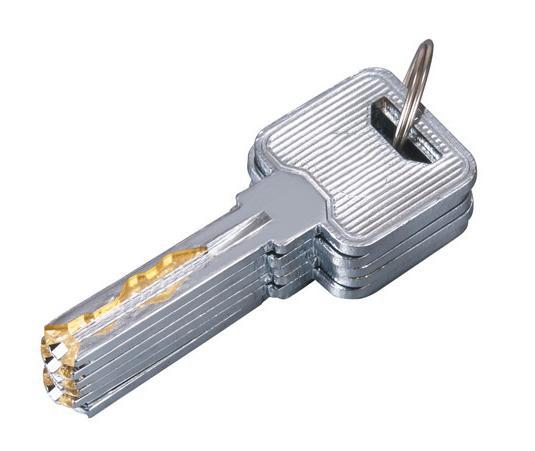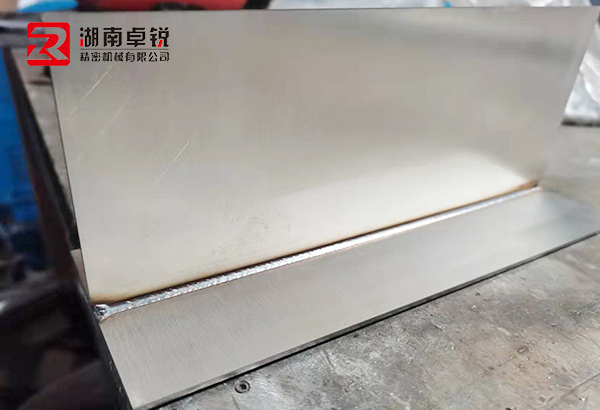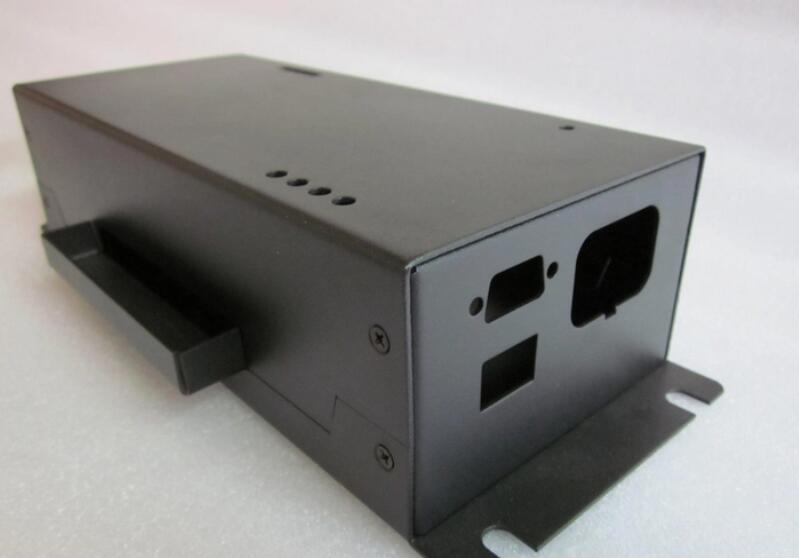Shenzhen EMAR Precision Technology Co., Ltd. is a professional manufacturer dedicated to the processing of lock core precision parts. The company has more than 100 CNC equipment specifically used for lock core processing, including CNC walking machines, cutting machines, turning milling composite machining centers, and CNC Machining centers, providing customized processing and mass production of lock core precision parts for you. I believe that everyone in life will use locks to protect their belongings, but many friends are confused when choosing which lock or lock core to use. Today, EMAR Precision Technology will provide a detailed explanation of the knowledge about lock core grades and how to choose lock cores by reviewing a large amount of information.
Actually, many people are unaware that lock cylinders are classified into different levels, just like how many people are not familiar with the A, B, C, and D levels of anti-theft doors. We only understand when we need the ball and realize that the lock cylinder is graded and difficult to distinguish. At present, the lock cylinder grades on the market are roughly divided into A level, B level, super B level, C level, super C level, D level, and so on. Their origin can be traced back to 1994 when the country issued the "GA/T73-94" mechanical anti-theft lock standard, which clearly defined A-grade locks and B-grade locks. The main constraint is that A-grade locks require more than 1 minute to unlock with anti lock technology, and B-grade locks require more than 5 minutes to unlock with anti lock technology. That is to say, according to national standards, there are currently only two types of locks on the market: A-grade and B-grade. The main difference between them is the time when the anti lock technology is activated, rather than a specific style.
So, what about those super B-class and C-class locks? Because in addition to national standards, lock manufacturers also develop their own enterprise standards. Baidu explained the meaning of "enterprise standards", which are formulated by the enterprise and approved and published by the legal representative or authorized supervisor of the enterprise. That is to say, these standards that exceed B and C levels may seem higher than the national standards of A and B levels, but in reality, they are a behavior formulated by enterprises without authorization. Each enterprise‘s level standards may be different, which is why there is today‘s chaotic market situation of lock cylinder levels, and even a few manufacturers have already marked lock cylinder levels as D and E.
So we remind consumers that when choosing locks, they should not only look at the grade on the lock core packaging, nor should they only listen to the salesperson‘s introduction. Below is a brief introduction on how to distinguish the types of lock cylinders and choose the appropriate lock cylinder correctly.
1. Single row marble lock, commonly known as A-level lock
 This type of lock uses a marble structure, usually consisting of 7 marbles, so there are approximately 7 dots of varying depths on the key. These dots have evolved from the original serrated structure and have a very simple structure. It can be opened directly using a locking hook or quickly using a tin foil unlocking tool (it can be opened with a needle in movies and TV shows, and some variety shows have similar features). It is basically a must-have lock for locksmiths to practice, with a market price of around 40 yuan and a Taobao price of around 15 yuan. This type of lock is cheap and simple, and many new houses in residential areas come standard with it. Many anti-theft door manufacturers also use this lock to save costs, which once led to a high market share for this type of lock. Tin foil unlocking tools are the most skilled at opening this lock, which can be opened without damage in just a few seconds. Therefore, it belongs to the A-level lock in the national standard. If you are still using this lock at home, it is recommended to replace it as soon as possible for any reason. There are several other lock cores that are equally renowned as A-level locks.
This type of lock uses a marble structure, usually consisting of 7 marbles, so there are approximately 7 dots of varying depths on the key. These dots have evolved from the original serrated structure and have a very simple structure. It can be opened directly using a locking hook or quickly using a tin foil unlocking tool (it can be opened with a needle in movies and TV shows, and some variety shows have similar features). It is basically a must-have lock for locksmiths to practice, with a market price of around 40 yuan and a Taobao price of around 15 yuan. This type of lock is cheap and simple, and many new houses in residential areas come standard with it. Many anti-theft door manufacturers also use this lock to save costs, which once led to a high market share for this type of lock. Tin foil unlocking tools are the most skilled at opening this lock, which can be opened without damage in just a few seconds. Therefore, it belongs to the A-level lock in the national standard. If you are still using this lock at home, it is recommended to replace it as soon as possible for any reason. There are several other lock cores that are equally renowned as A-level locks.
2. Double row marble lock, commonly known as B-grade
 This type of lock core, commonly known as B-grade, is based on A-grade by adding marbles to achieve double row. The principle is similar to A-grade, but due to the increase in marbles, the technical unlocking difficulty will be greater and the opening and use time will be longer. The Panpan safety door used to have a variant lock type of this structure, with a market price of around 80 yuan. The latest tin foil unlocking tool has developed a separate mold for this type of lock, which can achieve quick unlocking, and the key gun can also open this lock without damage. If possible, it is recommended to upgrade and replace it. The technical unlocking time is greater than 5 minutes, which belongs to the B-level lock in the national standard.
This type of lock core, commonly known as B-grade, is based on A-grade by adding marbles to achieve double row. The principle is similar to A-grade, but due to the increase in marbles, the technical unlocking difficulty will be greater and the opening and use time will be longer. The Panpan safety door used to have a variant lock type of this structure, with a market price of around 80 yuan. The latest tin foil unlocking tool has developed a separate mold for this type of lock, which can achieve quick unlocking, and the key gun can also open this lock without damage. If possible, it is recommended to upgrade and replace it. The technical unlocking time is greater than 5 minutes, which belongs to the B-level lock in the national standard.
3. Double row+blade commonly known as Super B-class
 This type of lock adds a blade groove on the basis of B-level, greatly improving the safety level of the original ball structure. Even now, it is still cracked and opened using semi violent methods, but this type of lock is more prone to failure due to its complexity. Its biggest highlight is the first use of blade structure in civilian locks, but the disadvantage is that the blade structure is too few and weak. The market price is around 80 yuan, and Taobao is around 40 yuan. If you are using this lock and the security situation in the community is good, you can continue to use it without any major safety issues. Due to the upgrade of blade slots on the basis of B-level, it is called a super B-level lock in the industry. It should be noted that "Super B level" is an enterprise standard, which is actually the B level in the national standard, but basically no one says so.
This type of lock adds a blade groove on the basis of B-level, greatly improving the safety level of the original ball structure. Even now, it is still cracked and opened using semi violent methods, but this type of lock is more prone to failure due to its complexity. Its biggest highlight is the first use of blade structure in civilian locks, but the disadvantage is that the blade structure is too few and weak. The market price is around 80 yuan, and Taobao is around 40 yuan. If you are using this lock and the security situation in the community is good, you can continue to use it without any major safety issues. Due to the upgrade of blade slots on the basis of B-level, it is called a super B-level lock in the industry. It should be noted that "Super B level" is an enterprise standard, which is actually the B level in the national standard, but basically no one says so.
4. Full blade lock commonly known as C-grade
 Nowadays, most of the locks that can become C-level locks are full blade structures, although there are also a few small manufacturers that use double row marbles and blades to mark them as C-level. So when we judge whether he is a C-level, we must look at the key. The blade lock is the one with full milling grooves. This type of lock doesn‘t have too many issues with anti lock technology opening yet. The market price is around 100 yuan, and it‘s around 70 yuan on Taobao. We can see that this type of lock is basically not related to Super B level, so the manufacturer calls it C level. In fact, we can see that the enterprise standard is calculated by generation, and once the technology is upgraded, the level is raised once, which is different from the initial national standard anti-theft time. It actually belongs to B level in the national labeling. That‘s why many consumers are confused about the level of the lock cylinder.
Nowadays, most of the locks that can become C-level locks are full blade structures, although there are also a few small manufacturers that use double row marbles and blades to mark them as C-level. So when we judge whether he is a C-level, we must look at the key. The blade lock is the one with full milling grooves. This type of lock doesn‘t have too many issues with anti lock technology opening yet. The market price is around 100 yuan, and it‘s around 70 yuan on Taobao. We can see that this type of lock is basically not related to Super B level, so the manufacturer calls it C level. In fact, we can see that the enterprise standard is calculated by generation, and once the technology is upgraded, the level is raised once, which is different from the initial national standard anti-theft time. It actually belongs to B level in the national labeling. That‘s why many consumers are confused about the level of the lock cylinder.
5. Other commonly known as C+level or higher
This type of lock mostly adds anti-theft function on the basis of blade locks, and commonly includes the addition of steel beams and all stainless steel blade lock cores. This design is designed to prevent violent interruptions. Although C-grade blade locks are technically powerful, they are not much different from ordinary lock cores in terms of resistance to violence. Secondly, there is a lock core with idle function that can resist violent damage from electric drills and enhance the ability to prevent technical opening, which is currently one of the top technologies. Some locks have also changed the style of the key teeth, altered the material of the key handle, replaced the packaging box with wooden carvings, gold-plated the key, and other means to enhance the high-end feel of the lock core, without truly improving the anti-theft performance of the lock.
So, as consumers, how should we choose the lock cylinder that suits us?
If you are still using a pinball lock, whether it is a double row or a single row, it is indeed time to upgrade. It is recommended to use at least a blade structure lock core with a fully curved key. For those who have higher requirements for anti-theft, such as those who have been stolen before and are afraid of thieves coming again, they can choose lock cores with idle, steel beams, and full steel. Although the anti lock technology has not been greatly improved, this type of lock is indeed stronger in resisting violent damage and unlocking, and the anti-theft performance will be better. Consumers should choose appropriate lock cores based on their family situation and community security, and not blindly follow sales recommendations. To determine the anti-theft performance of the lock cylinder, one should judge it based on the shape of the key and the material of the lock cylinder. Do not be deceived by its appearance or packaging.
How about this, are you thinking about which level of lock cylinder you are currently using? I believe you have gained a new understanding of lock cores. If you have a need for precision machining of lock core parts, please feel free to call EMAR Precision Technology. We are dedicated to serving you.



 Spanish
Spanish Arabic
Arabic Spanish Basque
Spanish Basque Portuguese
Portuguese Belarusian
Belarusian Japanese
Japanese Russian
Russian Icelandic
Icelandic Bulgarian
Bulgarian Azerbaijani
Azerbaijani Estonian
Estonian Irish
Irish Polish
Polish Persian
Persian Boolean
Boolean Danish
Danish German
German French
French Filipino
Filipino Finnish
Finnish Korean
Korean Dutch
Dutch Galician
Galician Catalan
Catalan Czech
Czech Croatian
Croatian Latin
Latin Latvian
Latvian Romanian
Romanian Maltese
Maltese Malay
Malay Macedonian
Macedonian Norwegian
Norwegian Swedish
Swedish Serbian
Serbian Slovak
Slovak Slovenian
Slovenian Swahili
Swahili Thai
Thai Turkish
Turkish Welsh
Welsh Urdu
Urdu Ukrainian
Ukrainian Greek
Greek Hungarian
Hungarian Italian
Italian Yiddish
Yiddish Indonesian
Indonesian Vietnamese
Vietnamese 简体中文
简体中文 Haitian Creole
Haitian Creole








